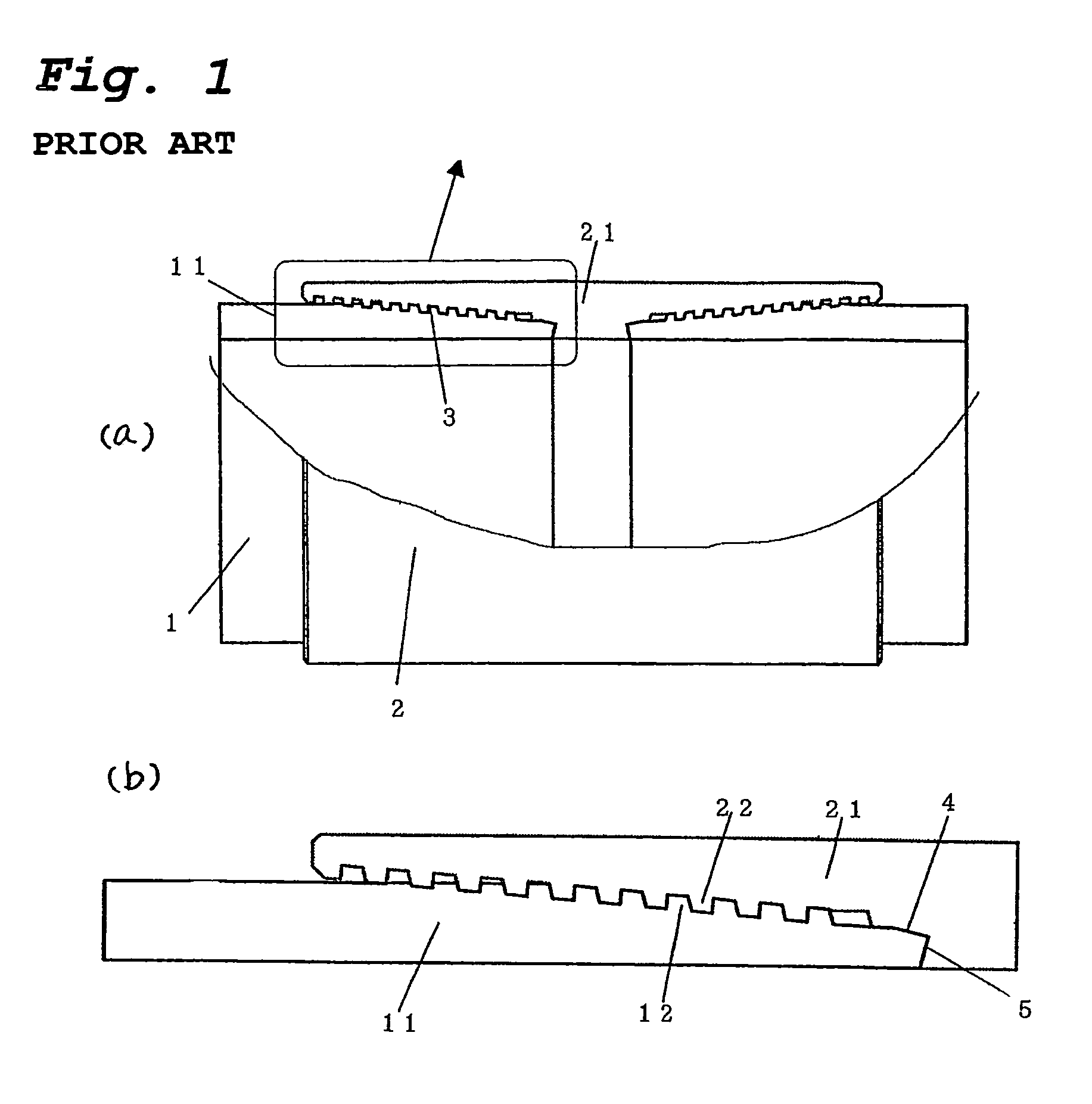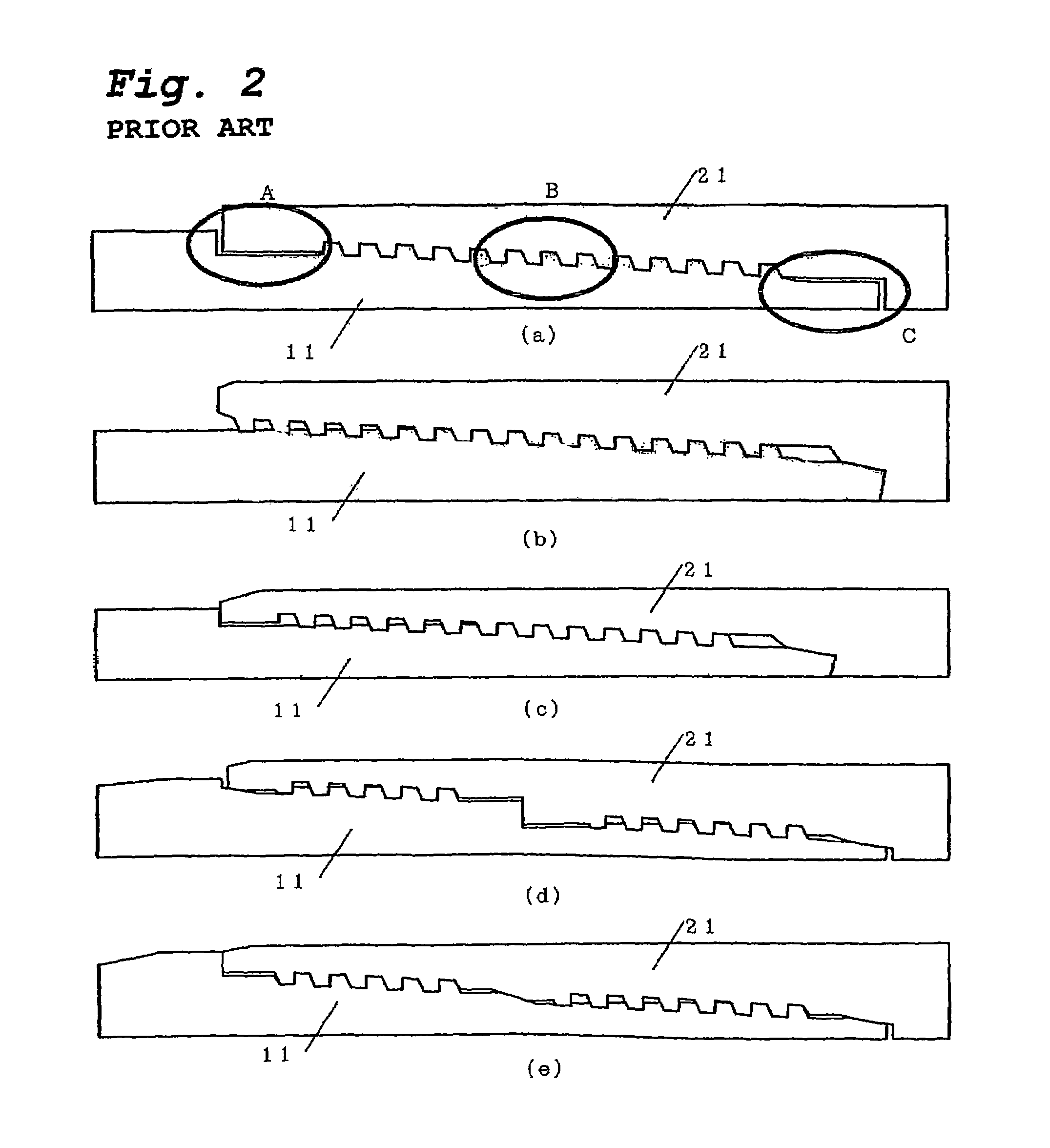Threaded joint for steel pipes
a technology for connecting steel pipes and threaded joints, which is applied in the direction of hose connections, screw threaded joints, mechanical equipment, etc., can solve the problems of weak contact at the thread root, plastic deformation, and insufficient tightening, so as to improve the compression resistance of a rugged thread, the effect of ensuring the resistance to external pressure and torque variation
- Summary
- Abstract
- Description
- Claims
- Application Information
AI Technical Summary
Benefits of technology
Problems solved by technology
Method used
Image
Examples
example
Example 1
[0166]In order to demonstrate the effects of the present invention more concretely, the following numerical simulation analysis by the elasto-plastic finite element method and thread cutting test were carried out.
[0167]The subject of evaluation was the coupling-type threaded joint for oil well pipes shown in FIG. 1. It was a joint for a 5-½ inch #20 pipes (outer diameter of 139.7 mm, wall thickness of 9.17 mm) joint.
[0168]The material was that having the API specification P110. In finite element analysis, it was treated as an elasto-plastic body with an isotropic hardness, and it was numerically modeled as having a coefficient of elasticity of 210000 MPa and having a 0.2% strength equal to the nominal yield strength of 110 ksi (758 MPa).
[0169]Table 1 shows the joints on which evaluation was carried out. The shapes of the metal seal portions and the torque shoulder portions being analyzed were slightly different from each other, but the minimum values and the maximum values ...
example 2
[0180]In this example, Example 1 was repeated, and numerical simulation analysis by the elasto-plastic finite element method was carried out.
[0181]Table 3 shows the joints on which evaluation was carried out. Sample 6 which was a joint according to the present invention had a rugged thread as a first thread portion of a two-level thread and a buttress thread as a second thread portion. A metal seal was disposed only in portion B, and a torque shoulder was disposed only in portion C.
[0182]The joints of Samples 7-8 were one-level threads like that shown in FIG. 1. They had a structure in which a metal seal and a torque shoulder were provided at the end portion of a pin.
[0183]The seal shape and the torque shoulder shape of the joints of Samples 6-8 were each slightly different from those described above, but the minimum value and maximum value of the interference imparted to the metal seal portion were all made the same.
[0184]Of the thread shapes, Samples 6-8 each had a thread pitch of...
example 3
[0192]In this example, Example 1 was repeated, and numerical simulation analysis by the elasto-plastic finite element method and estimation of the time for thread make-up were carried out.
[0193]Table 5 shows the joint on which evaluation was carried out. Ones shown in FIG. 12 were used as representative examples of the present invention. The shapes of the metal seal portion and the torque shoulder portion being analyzed had slight differences, but the minimum and the maximum values of the seal interference were the same for each.
[0194]Of the thread shapes which were analyzed, the thread pitch was 5.08 mm and the thread taper was 1 / 18 for each one.
[0195]
TABLE 5Manufacturingtoleranceof threadSam-interferenceLoadStabbingple(overflankflankThreadNo.diameter)angleangleheightComments90.2 mm+3°35°1.6 mmThread mode ofFIG. 12(a)100.2 mm+3°35°1.6 mmThread mode ofFIG. 12(e)110.2 mm+3°35°1.6 mmThread mode ofFIG. 12(i)120.2 mm+3°35°1.6 mmAll single-startrugged threads130.19 mm −3°10°1.58 mm All s...
PUM
 Login to View More
Login to View More Abstract
Description
Claims
Application Information
 Login to View More
Login to View More - R&D
- Intellectual Property
- Life Sciences
- Materials
- Tech Scout
- Unparalleled Data Quality
- Higher Quality Content
- 60% Fewer Hallucinations
Browse by: Latest US Patents, China's latest patents, Technical Efficacy Thesaurus, Application Domain, Technology Topic, Popular Technical Reports.
© 2025 PatSnap. All rights reserved.Legal|Privacy policy|Modern Slavery Act Transparency Statement|Sitemap|About US| Contact US: help@patsnap.com



